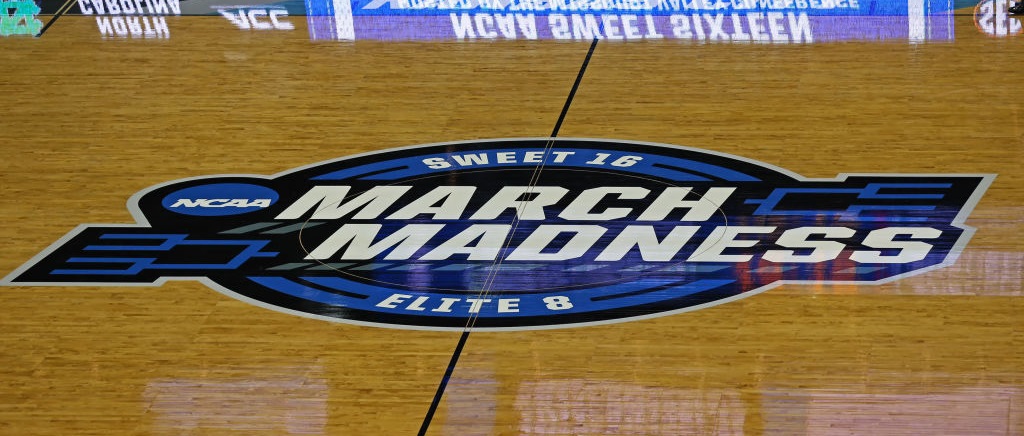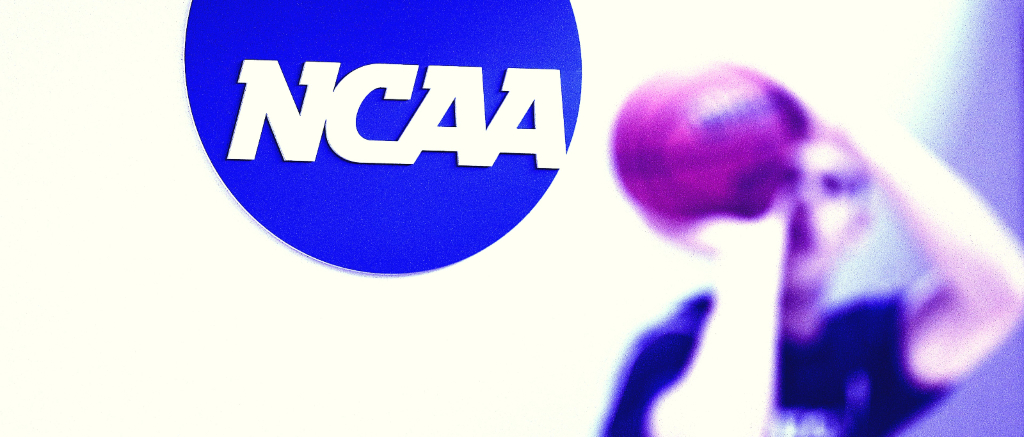While college athletes sit at home broke, with their seasons cancelled and the future uncertain, their conferences are trying to help their schools stay rich. The Group of Five recently penned a letter to Mark Emmert, the president of the NCAA, claiming that the COVID-19 pandemic has rendered the status quo in college athletics fiscally imprudent.
Translation: The schools can’t continue to profit on the backs of unpaid laborers in the “new normal.”
The Group of Five consists of mid-major Division I conferences, including the American Athletic Conference, Conference USA, Mid-American Conference, Mountain West Conference, and Sun Belt Conference. They have sought immediate relief in the form of a blanket waiver that mostly reduces opportunities for college athletes.
These conferences would like several key NCAA regulatory requirements for maintaining Division I membership status waived, including but not limited to:
- Financial aid requirements.
- Minimum number of sponsored sports.
- A freeze on any new institutions from joining Division I conferences.
For. The. Next. Four. Years.
A freeze on new Division I members means fewer universities competing for the same pool of athletes. A waiver on financial aid requirements will be a direct hit to athletes. Removing the requirement on the number of sponsored sports will be a death knell to many existing so-called “non-revenue generating” programs across the country — Old Dominion’s wrestling and the University of Cincinnati’s men’s soccer teams were the first shoes to drop. Both schools cited impending budget cuts and the long-term health of their respective athletic departments as reasons for discontinuation. They also contend that making the decision now gives current athletes more time to navigate the transfer process.
With carte blanche granted by the powers that be, this waiver would likely lead to rash decisions by athletic departments, enabling them to eliminate programs and, as a result, athletic scholarships. While these cuts will be made under the guise of fiscal prudence, this may actually be faulty logic.

For the most part, programs like those cited above provide athletes with only partial aid, or even no aid at all. This can actually serve as a tool to attract paying students, even if they are paying below the “sticker price.” Unless the school is at enrollment capacity with a waitlist every year — many aren’t — they are likely making money on partial payers. Cutting these sports will result in a loss of this revenue.
Similarly, many schools mark athletic scholarships as an expense. This is an accounting trick. A scholarship is the school ostensibly paying itself. The cost of having a full-scholarship athlete on campus is actually significantly lower. Sure, the school will say an athlete is receiving a scholarship valued at $50,000 per year, but in reality, the athlete doesn’t actually cost the school anywhere close to that unless the school is turning away full-paying students to do so. Since very few students at most universities actually pay sticker price, even schools at full-capacity are rarely in a position where they are saying no to customers paying full-freight.
The power structure of the current college sports system obviously favors these conferences and their constituent universities. They have legitimate influence over NCAA guidelines and, more importantly, a direct line of communication to NCAA President Mark Emmert. Despite crying poor, the losses associated with cancelling March Madness and potentially delaying the start of the college football season will be made back in due time.
Having said that, COVID-19’s impact on the business of college athletics is not limited to the institutions. Thousands of athletes whose time and energy have been spent making other people rich won’t have the same economic rebound. They can’t profit from their inalienable right to market themselves. They cannot apply for the Paycheck Protection Program. Hell, many aren’t even eligible for stimulus checks.
The athlete doesn’t have a single avenue through which they can advocate for themselves in the face of a threat that has the capacity to alter the trajectories of their lives. If the Group of Five’s waiver request is granted, make no mistake: Athletes will bear the brunt of this pandemic in the interest of maintaining normalcy for bloated athletic departments nationwide.
To this end, it has recently been reported that the NCAA Division I Board of Governors will vote on a new rule to potentially alleviate SOME of the restraints on athlete’s ability to monetize their own name, image, and likeness over the next couple of years. While this appears to potentially be a positive step for athletes, they do not have time to waste right now.
As such, I would like to make a modest relief request on behalf of the athlete: a blanket waiver of NCAA rules that ban players from monetizing their own name, image, and likeness. While this change alone would not address the systemic issues of athlete exploitation in college sports, it would be a stride towards helping the NCAA’s workforce and product, and we’re already heading in this direction, anyway. More than thirty states currently have some form of name, image, and likeness legislation for college athletes in the works; ratification is inevitable.
Now, would this mean that every college athlete would find themselves swimming in lucrative sneaker deals? Of course not. But each athlete possesses a unique value, and who is Mark Emmert to tell them they’re not permitted to make every effort to realize that value?
There are plenty of levers athletes could pull outside of the realm of big brand partnerships to earn a few bucks — monetizing a Twitch stream, accepting payments for providing virtual training sessions, selling apparel, modeling, acting, or dropping some affiliate links in a social profile, to name a few — but only if these draconian rules are eliminated.
Now, I know some will cry out about this throwing away the balances of a “level playing field.” But let’s be real: The entire notion of equity across college athletics is a complete fallacy. Last I checked, the University of Texas has an annual athletic budget of over $206 million. Meanwhile, fellow Division I FBS school New Mexico State has an athletic department budget of $16.9 million. The inequity already exists in pretty much every department imaginable already.
Why do I care so much about helping 19 year olds line their pockets? Because I was one of them, and I’d have relished the opportunity to make, well, anything.

I played basketball at West Virginia and UMass. Both of my siblings played high major college hoops as well. I am intimately familiar with all that goes into being a college athlete and the burden placed on the athlete’s family in the name of amateurism.
College basketball players, on average, put in around 40 hours per week towards basketball-related activities. This spans beyond on-court duties — you have requirements to participate in university marketing initiatives, community events, media appearances, and more. Your life is ruled by your program. If you skip out on any of these activities, you put your scholarship at risk. This sounds like a full-time job because, well, it is.
But as a full-time college athlete, you hardly see a dime.
Had I tried to make a few bucks by monetizing a YouTube channel, running my own basketball camp, or selling goofy-ass dad hats emblazoned with references appealing only to the student section and the deepest recesses of basketball Twitter, I would have been stripped of my eligibility. Meanwhile, my teammates and I helped our coach secure a gig that paid him several million dollars per year to coach basketball at a different university.
Now, the winds of change are blowing, and the organization at the forefront can snap its metaphorical fingers if it so chooses. Instead of the NCAA moving at a snail’s pace to begin the process and eventually formulating a written plan on the issue of name, image, and likeness, make it happen now and give players a chance to help support themselves and their families in a period of economic uncertainty.
We’re in the middle of a global crisis. We’re experiencing significant educational disruption, economic hamstringing, and the deadliest worldwide virus in a century. College athletes being allowed to make some money as they ride out the storm should be the least of our worries.
If the NCAA is going to let schools change the rules for their own benefit in the name of the pandemic, it’s time they afford players the opportunity to profit from their cultural significance in the same way that schools, coaches, and administrators have done for decades.
It makes sense. It’s the right thing to do. And seeing as how major decisions are made in college athletics with the bottom line in mind, it certainly is appealing that this would cost the universities … nothing.
Luke Bonner is a former college basketball player. He is also the founder/CEO of PWRFWD and a long-time player rights activist. Follow Luke On Twitter: @LukeyBonner.







